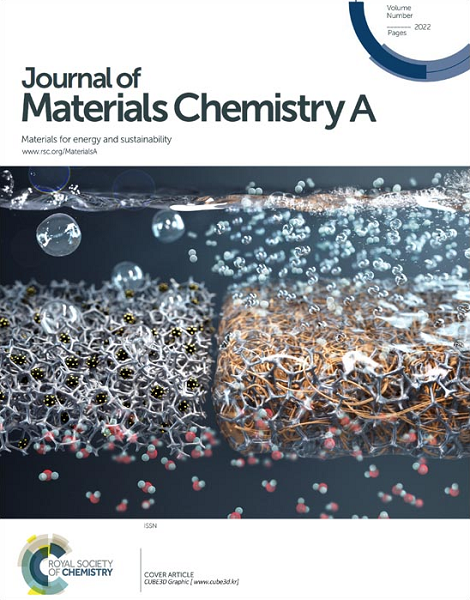Polythiophene Derived Nickel Cobaltite Nanocomposite Showing Excellent Photo-switching and Photo-assisted Enhanced Supercapacitor Properties
IF 10.7
2区 材料科学
Q1 CHEMISTRY, PHYSICAL
引用次数: 0
Abstract
Recently, significant attention has drawn in the field of photo-supercapacitors by coupling a photovoltaic cell within a supercapacitor device providing generation and storage of power in a single device. Here, we have chosen a substituted polythiophene (3-[1-ethyl-2-(2-bromoisobutyrate)] thiophene) (PT) as energy harvesting unit and spinel NiCo2O4 (NCO) as energy storage unit to prepare photo-assisted supercapacitor. The PT coated nano-octahedron assembled NCO nanorods are synthesized via ‘in situ’ oxidative polymerization with different ratio of PT and NCO (PT:NCO=1:1, PTNCO-1 and PT:NCO=2:1 (w/w), PTNCO-2) to get an optimum composition showing excellent electrochemical performance at both dark and illuminated conditions. The growth of porous PT matrix over the NCO nanorods is characterized from BET, SEM and TEM analysis and synergistic interaction between the components is evident from NMR, FTIR, Raman, UV-Vis, fluorescence and XPS spectral analysis. Significant increases of dc-conductivity, dark current and photocurrent (~104 times) from that of PT occurred in PTNCO nanocomposites. A minimum photocurrent gain (Ion/Ioff =1.2) and longer stay of photoelectrons in PTNCO-1 predicts a larger photo-current storage than NCO and PTNCO-2 samples. Electrochemical experiments using three electrode devices indicate that the PTNCO-1show maximum specific capacitance (CS) of 958 F/g at 1 A/g current density. PTNCO-1solid state device show CS value 90 F/g at dark condition and at illuminated condition it is 106 F/g at 1 A/g current density and at 5 A/g current density Cs values are 47.8 and 67.4 F/g, respectively. Thus, an increase of CS from 17.8% to 41% at 1 to 5 A/g current density is noticed under UV-light (λ=365 nm) showing higher increase of CS at higher current density. The rate capability has increased from 53 to 63.6% i.e., 10.6% followed by 5% increase of cyclic stability at illuminated state than those at dark state. Impedance data supports better storage capacity of the photoelectrons in PTNCO-1 where a decrease of charge transfer resistance and an increase in capacitance value by ~44 mF is achieved at the illuminated condition than at dark condition. Thus, the increased photoconductivity assists in the increase of specific capacitance establishing PTNCO-1 to behave as a good photo-assisted enhanced supercapacitor.求助全文
约1分钟内获得全文
求助全文
来源期刊

Journal of Materials Chemistry A
CHEMISTRY, PHYSICAL-ENERGY & FUELS
CiteScore
19.50
自引率
5.00%
发文量
1892
审稿时长
1.5 months
期刊介绍:
The Journal of Materials Chemistry A, B & C covers a wide range of high-quality studies in the field of materials chemistry, with each section focusing on specific applications of the materials studied. Journal of Materials Chemistry A emphasizes applications in energy and sustainability, including topics such as artificial photosynthesis, batteries, and fuel cells. Journal of Materials Chemistry B focuses on applications in biology and medicine, while Journal of Materials Chemistry C covers applications in optical, magnetic, and electronic devices. Example topic areas within the scope of Journal of Materials Chemistry A include catalysis, green/sustainable materials, sensors, and water treatment, among others.
 求助内容:
求助内容: 应助结果提醒方式:
应助结果提醒方式:


